Vermont
Green Mountain Mysteries: A Taxonomy of Vermont Noir
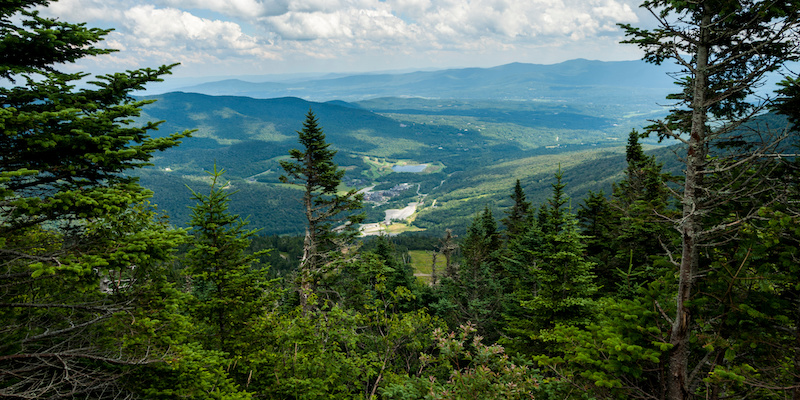
For a small state (pop. 647,064), Vermont looms large in literature. Not only do we claim the second highest per capita number of working writers in the country, behind only Washington, D.C., but we can claim Robert Frost, Sinclair Lewis, Dorothy Thompson, Shirley Jackson, Chris Bohjalian, Julia Alvarez, and Rebecca Makkai, as full- or part-time residents of our state.
Article continues after advertisement
While the state has historically had an extremely low crime rate (though we have had sensational and violent murders that have rocked our communities), it has been host to many fictional horrors and murders. The landscape of Vermont lends itself well to made-up mystery. Our mountainous terrain creates a sense of remoteness, a feeling that we’re beyond the reach of many traditional forms of law enforcement. Our location at the edge of the country, just an hour or two’s drive to Quebec for most Vermonters, opens up the omnipresent possibility of escape. And our sparsely populated hills and valleys mean you may not be seen doing whatever dastardly thing you want to do. It seems like Vermont has been having a bit of a moment in the thriller space—Bestselling writers like Riley Sagar, Dervla McTiernan, Shari LaPena, and Jessa Maxwell have recently set books here, making good use of that remoteness, of our close-knit communities and our otherworldly natural beauty.
In his 1930 story/novella, The Whisperer in Darkness, H.P Lovecraft (who stayed in Vermont for short periods) establishes a version of Vermont that would take hold in readers’ imaginations, describing “the wild domed hills of Vermont” where the narrator, a folklorist and professor of literature at a Massachusetts college, arrives to meet up with a man named Henry Akeley. Akeley claims to have important information about the discovery of the remains of strange beings washing down into the valleys in the aftermath of the 1927 flood. Lovecraft creates a sense of gothic claustrophobia in Akeley’s ancestral farmhouse and the narrator’s descriptions of Vermont as a barely tamed wilderness makes his tale of horror all the more possible — and chilling.
Twenty-one years later, the writer Shirley Jackson, who lived with her husband, Stanley Edgar Hyman, and their children in North Bennington, Vermont while he was teaching at Bennington College, took inspiration from the mountains of Southwestern Vermont and the Berkshire Mountains of Massachusetts to create the eerie landscapes in her stories and novels. Her 1951 novel Hangsaman was inspired by the real-life disappearance of a Bennington College student and her classic short story The Lottery was suggested by a shopping trip out and about in North Bennington.
Donna Tartt’s 1992 novel of collegiate murder, The Secret History, was many readers’ introduction to the fourteenth state. I love the book with a white-hot passion and reread it at least once a year. Tartt, who lived in Vermont for four years while a student at Bennington College, weaves and unweaves a deconstructed murder plot, the solution revealed on the very first page, the turns of the path to get there snaring readers and not letting them go until the final, devastating word. The novel is unrelentingly brilliant and she draws, in elegiac description, the landscape of Southwestern Vermont up against the New York border. On my frequent revisitings, I have sometimes wished that Tartt had lavished as much care and characterization on the town part of the fictional Hampden’s town and gown dynamic as she does on the gown. In many ways though, that’s the point of a novel set firmly within the consciousness of a Californian experiencing Vermont for the first time and if her Vermonters can seem one dimensionally backwards sometimes, Tartt’s poetic descriptions of the Vermont winter are so specific and so rapturous you can feel her own wonder as a Southerner experiencing the season during her time in Bennington coming off the page.
It’s always interesting to see what writers not familiar with the state do with our ingredients. A few years ago, the Burlington Free Press hilariously rated some of the astonishing number of Hallmark channel Christmas movies set in Vermont. (My takeaway is that writers should always research the governance structures of places they want to write about but do not live in; one of the many ways these movies reveal themselves as not written by locals is by assigning mayors and city councils to little towns of 1,500 people.)
And although we love the series, my family had fun speculating about why its producers tried to claim that the not-really-Vermonty-looking New England location of the boarding school in the Addams Family spinoff Wednesday was in the Green Mountain State. (“Um, I really, really like this, but why are there Pilgrims?” one of my children was heard to say.)
Actually, there seem to be quite a few novels set at fictional Vermont boarding schools, which is curious since . . . we don’t have many of them. We have a small number of public-private academies and two smaller boarding schools in the southern part of the state, but for reasons having to do with Vermont’s location, historic economy, and post-Civil War depopulation, the state is not dotted with tony or possibly spooky private secondary boarding schools the way New Hampshire, Massachusetts, and Connecticut are.
My very favorite Vermont mystery and horror tales capture the odd contradictions and dichotomies of my state—its remoteness and its worldliness; its natural beauty and its stark post-industrial downtowns and renewed downtown areas; its wild forests and its manicured pastures and farmland; its frigid winters and its glorious short summers; its progressive (by reputation and—mostly—in reality) present and the shameful periods and incidents in its distant and not-so-distant past; its warm welcome and its derision of flatlanders and those who (like me) weren’t born here; its flinty independence existing side-by-side with a longstanding communitarian impulse. There are many non-resident writers who have done the work to learn about our quirky, wonderful state but I’d like to highlight some Vermont writers, whether they’ve been here for generations or a few months or years.
Here then is a non-exhaustive list of some crime fiction—or novels with crimey elements—set in Vermont and written by Vermont or Vermont-adjacent writers. Cozy, stark, gritty, dark, funny, disturbing—there’s something here for every taste:
The novels of Howard Frank Mosher
They’re not crime fiction, but Mosher’s wonderful twelve novels, set in the fictional Kingdom County, are a first stop for anyone wanting to know more about the state, its personalities, and the parts of our history we highlight and hide. Many of the novels have plenty to offer for fans of crime fiction, in particular 1977’s Disappearances, about a bootlegging father and son duo, and 1989’s wonderful A Stranger in the Kingdom (inspired by actual events) in which a Black minister arrives in a small Vermont town and is charged with adultery and murder.

The Joe Gunther series by Archer Mayor
In his thirty-three police procedurals featuring Vermont Bureau of Investigation detective Joe Gunther, Mayor has crisscrossed the state (and sometimes beyond), finding confounding murders for his protagonist to solve. The pleasures of the series are many and many readers around the world have been introduced to Vermont and Joe’s home of Brattleboro through the books. Joe is an imperfect and sympathetic protagonist and the cast of characters contains friends, neighbors, and fellow investigators of Joe’s who have come to feel like family to Mayor’s readers. The novels don’t bow to Vermonty stereotypes, instead exploring a grittier side of our hamlets than the one found in tourism brochures, and his characters inhabit real towns, cities, and landscapes representing a broad swathe of the state’s residents.
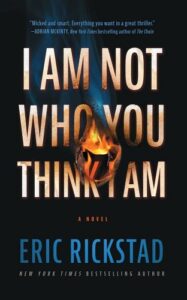
The Canaan Series, I Am Not Who You Think I Am and other novels by Eric Rickstad
Rickstad, who lives in the Bennington area, is the author of a series and standalone novels set in his home state, as well as his latest, Lilith, about a mother seeking justice after a school shooting. The Canaan novels, set in the actual Northeast Kingdom town of Canaan, feature good investigators going after very bad killers. Rickstad’s version of Vermont is multi-layered. There are no picture-postcard scenes and his characters move about in real darkness. He writes with a critical eye but also a reverence for his home. 2021’s I Am Not Who You Think I Am is a gothic treat, set in the Bennington area and featuring a once-extravagant mansion that hides terrible secrets.
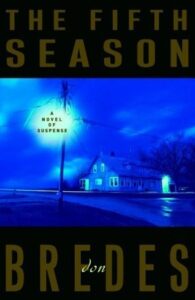
The Hector Bellevance series by Don Bredes
I really enjoyed Bredes’s three-book series, published in the 2000s, and always wished there had been more of them. Bellevance returns to his hometown in northern Vermont after a career as a homicide detective in Boston. The novels balance small-town intrigue with authentic emotional darkness as Hector, appointed town constable in the first novel, solves mysteries, grows vegetables, dates and then marries the town’s reporter, and learns that, as Robert Frost wrote, “Home is the place where, when you have to go there, they have to take you in.”

The Sleepwalker by Chris Bohjalian
The work of bestseller Bohjalian has long spanned genres and categories, but his breakout hit Midwives, is set in Vermont and he has set books in his home state throughout his career. 2017’s The Sleepwalker, set in a fictional Vermont village, is perhaps the novel most firmly within the crime category. The daughter of a missing woman who was a habitual sleepwalker gets too close to the investigation into her mother’s disappearance. Bohjalian channels Hitchcock, using the trappings of small town Vermont and the natural landscape of Addison County to ratchet up the tension.

Jennifer McMahon’s suspense novels
McMahon, who was until recently a Vermont resident, has set most of her thrillers in the state. Many have supernatural elements and she uses the region’s history in powerful ways, dredging up mystery and murder from the past to populate the present with ghosts. Her characters are complicated and beautifully drawn and she is especially interested in children and young people and the way childhood trauma can stalk us as adults.
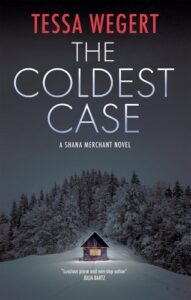
The Shana Merchant series by Tessa Wegert
Connecticut author Wegert’s series is actually set in the Thousand Islands region of upstate New York, but her wonderful protagonist, New York State Senior Investigator Shana Merchant, grew up in Swanton, Vermont, and Wegert, who was raised just over the border from Vermont in Quebec, captures the particular feel of the town, the specifics of border-spanning Lake Champlain, and the surrounding landscape on Vermont’s boundary with Quebec. Vermont also provides much of the origin story for Shana’s narrative arc, in ways I won’t detail for fear of spoiling her twisty plots. The sixth Shana Merchant mystery, The Coldest Case, comes out in November.
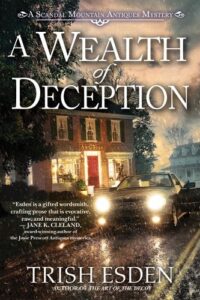
The Edie Brown series by Trish Esden
Edie Brown, an art and antiques dealer (like Esden), returns to her family home in northern Vermont after a scandal involving her mother and solves mysteries related to rare and stolen objects. Esden knows her subject well and Edie’s explorations provide an in-depth look at contemporary Vermont, as well as the state’s multi-faceted history.

We Love to Entertain by Sarah Strohmeyer
Strohmeyer, the author of the Bubbles Yablonsky series, as well as many other works of fiction and suspense, sets her home renovation show thriller in the fictional town of Snowden, Vermont, uncovering long-held secrets amongst the townspeople. She pokes delicious fun at reality show culture, writes with authority about the administration and business dealings of a small Vermont town, and readily captures the dynamics between locals and out-of-staters interested in cheap rural real estate.
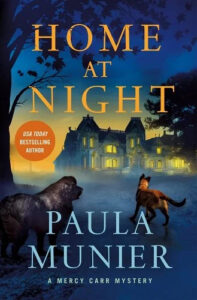
The Mercy Carr and Troy Warner series by Paula Munier
Munier, who lives just over the border in New Hampshire, sets her series in a fictional Vermont town based on Manchester, Vermont. Former Army MP Mercy Carr and her retired military bomb-sniffing dog Elvis solve mysteries with game warden — and Mercy’s love interest — Troy Warner. Munier really nails the dynamic of a shire town and its relationship to the grittier places around it. Many of her plots take place in Vermont’s wilderness areas and there is great appeal here for dog lovers.
The Perfect Liar by Thomas Christopher Greene
Greene, the author of six novels and a recent collection of essays, and the founder of the Vermont College of Fine Arts, sets this domestic thriller in Burlington, Vermont’s largest city. A newly married couple who are keeping secrets from each other find that their pasts have followed them to Vermont when a strange note, reading I Know Who You Are, appears on their door.
And two books not out yet by Vermont authors:
Vermont author Margot Harrison, who has written four YA novels, makes her adult debut with The Midnight Club. It isn’t out until September, but it has a really compelling concept: in order to solve the long-ago murder of one of their own, a group of friends who went to college together in Vermont meet for a reunion and take a drug that allows you to relive your memories.
Also out in September is Vermont author Kara Lacey’s Caught on Camera, about a grieving widow who moves to a fictional village in Vermont and joins a local camera club. This sounds like a fun take on the cozy, village mystery.
***
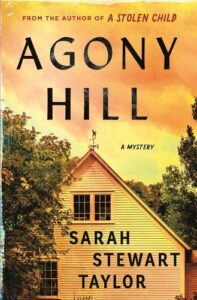

Vermont
How healthy in Lake Champlain? Here’s what the scientists are seeing

Bacteria, microplastics and trash from landfills are all serious concerns when looking at the health of Lake Champlain, especially after the flooding last year and this summer.
With the high water flow after flooding a variety of debris floats down rivers and into the lake. Lake Champlain Sea Grant Director Anne Jefferson says water pollution comes in many forms; for example, someone’s Tupperware − something not intended to be trashed − floating out of their house during flooding.
Early indicators have led local scientists to conclude that recent flooding is not impacting Lake Champlain’s health as much as last year’s storms, although there are still concerns for the watershed’s well-being. They continue to monitor the watershed and keep the public up-to-date with their findings.
That said, the July 10 and 11 storm added large amounts of phosphorus to the lake, which can drive cyanobacteria blooms later in the summer, said researchers aboard the Marcelle Melosira on July 18 as part of a presentation by Lake Champlain Sea Grant, University of Vermont and the Lake Champlain Basin Program.
Too much of a harmful bacteria can make the water unsafe, leading to closed beaches. While bacterial blooms happen naturally with warm weather and stagnant water, flooding exacerbates it.
A new way to study
The Marcelle Melosira, the University of Vermont’s research and teaching vessel is named after donor and former Sen. Patrick Leahy’s wife and the previous research vessel. It began sailing Lake Champlain July 23, 2023. It’s docked outside the Rubenstein Ecosystems Science Laboratory on the Burlington waterfront.
The “one-of-a-kind” boat hosts cutting-edge technology and research equipment, according to Kris Stepenuck, Lake Champlain Sea Grant associate director.
The Marcelle Melosira runs tests to monitor water clarity, track invasive species and erosion. UVM professors and students, Lake Champlain Basin Program researchers and others use the vessel depending on what they’re monitoring at that time. College interns also help the researchers on the boat.
The hybrid boat can run for up to three hours on electric energy, according to interim Capt. Taylor Resnick. He is aboard the Marcelle Melosira Monday to Friday, collecting data on the lake and how the basin − with waterways from Cabot to Rutland, and from Saranac Lake to Quebec − all play a role in lake health.
The boat is 20 meters long and 6 meters wide, with a capacity of 32 people. It was projected to be a 60% reduction in fossil fuel use from the previous vessel. The boat is equipped with:
- First-of-its-kind winch technology.
- Echo-sounding technology to ID and map underwater species distribution.
- Multi-net plankton and fish larvae sampler.
- Profiler to study large particles and zooplankton.
- Echoview software to process hydroacoustic data.
- Gas analyzer to measure gaseous compounds.
- Corer for sampling lake bottom sediment.
Watershed Alliance offers K-12 programs on the R/V Marcelle Melosira, which give elementary, middle and high school students and teachers the opportunity to learn firsthand about the study of limnology − the study of inland aquatic ecosystems − and to collect their own data on Lake Champlain with the aid of professional educators and lab research staff.
Protecting our waters
On July 23, Sen. Peter Welch, D, Vt., Sen. Bernie Sanders, I-Vt., Senate Majority Leader Chuck Schumer, D-N.Y., and Sen. Kirsten Gillibrand, D-N.Y., introduced the bicameral Lake Champlain Basin Program Reauthorization Act − legislation that would reauthorize the Lake Champlain Basin Program for 10 years at $55 million to support interstate conservation and the health of the Lake Champlain Basin.
The bill would establish the Lake Champlain Basin Program to “formally administer the program to promote climate resilience and mitigation through ecosystem restoration,” according to a press release.
Jefferson said that prevention is the best course of action. Removing bacteria or microplastics is extremely challenging, especially at such a large scale. Learning about the watershed and finding the best solutions to preserve it is the work they’re going to focus on.
Sydney P. Hakes is the Burlington city reporter. Contact her at SHakes@gannett.com.
Vermont
Vermont Democratic Party investigates potential election interference in Windham County

With the state primary behind us, Vermont’s Democratic Party is now investigating potential election interference in Windham County.
The party alleges that anonymous letters attacking a democratic candidate were sent to voters in Guilford days before the election.
The anonymous letter largely mentions Zon Eastes, the current Chair of the Guilford Selectboard, who was running as a democrat for the open state representative seat in Vermont’s Windham One District.
Although Eastes did end up winning his primary race, democrats still want to find out who sent the letters. Vermont’s Democratic Party alleges that one candidate may have taken part in illegal efforts to mislead voters about his opponent heading into Tuesday’s primary.
Jim Dandeneau, Executive Director of the Vermont Democratic Party, said that “This is a very clear attempt to undermine people’s faith in free and fair elections in Guilford and Vernon.”
The letter accused democratic house candidate Zon Eastes of criminal activity and election fraud, saying he used his position as Guilford Selectboard Chair to access the town’s vault and mess with ballots.
Director Jim Dandeneau said the real election fraud here is from that letter, which was spreading misinformation about Eastes.
“This is criminal election interference. This is a violation of campaign finance law, this is a violation of laws around electioneering communications,” Dandeneau continued. “It’s also very shady that it was made to look like official correspondence from the town, and we believe that that was in part an attempt to suppress some votes.”
While there’s no proof yet as to who sent the letter, democrats have a sneaking suspicion it may have been Eastes’ opponent Jason Herron, who ran as a republican previously, but changed parties for this year’s primary.
“It has all of the hallmarks of a typical MAGA extremist attack on our election system … We don’t know whether or not Jason Herron is connected to these letters, but we do know he has a history of MAGA extremism,” Dandeneau told us.
In a statement posted to social media, Herron denied the claims, and pointed the finger back at Eastes, saying he sent the letters to make people think he was being attacked.
Herron wrote ‘This was done with the intention to discourage citizens from voting for me while simultaneously encouraging citizens to vote for my opponent … This letter is a vicious attack with the purposeful intent of destroying my character on election day and was committed by wealthy and influential members behind the Democrat party’s steel curtain … (I’ve) never sent an anonymous letter to anyone, ever.’
In the end, Eastes is projected to win the primary by a large margin over Herron. The unofficial tally is 743 votes to 256, but the Secretary of State will take a few days to certify the results.
While Eastes now turns his attention to November’s election, the democratic party has begun its own investigation into the anonymous letters, filing public records requests with the town of Guilford and reporting the situation to Vermont’s Secretary of State.
Eastes said he just learned of the situation last night, and hasn’t read the letter yet. He told us he was “deeply honored and humbled by the support I’ve received from voters in Vernon and Guilford.”
Copyright 2024 Nexstar Media, Inc. All rights reserved. This material may not be published, broadcast, rewritten, or redistributed.
For the latest news, weather, sports, and streaming video, head to ABC22 & FOX44.
Vermont
Vermont under fire for allowing non-citizens to vote

Noncitizen residents may continue to vote in municipal elections in Vermont’s capital city of Montpelier, the state Supreme Court ruled, stating that such voting in local elections doesn’t violate the state constitution.
-
News1 week ago
The ‘Blue Walz’: How a low-key Midwestern governor shot to the top to be Harris’ VP pick | CNN Politics
-

 News1 week ago
News1 week agoKamala Harris holding rally in Pennsylvania to introduce running mate after securing Democratic nomination
-

 World1 week ago
World1 week agoVenezuela launches probe against opposition leaders Gonzalez, Machado
-

 Movie Reviews1 week ago
Movie Reviews1 week agoMinmini Movie Review: A soothing and understated film with characters to root for
-

 World1 week ago
World1 week agoNorth Macedonia on the energy transition path out of coal
-

 Culture1 week ago
Culture1 week agoIf that was it for Simone Biles' Olympic career, let's all appreciate what we just saw
-

 World1 week ago
World1 week agoThe day after in Dhaka
-

 World1 week ago
World1 week agoEx-Catalan leader Puigdemont headed back to Spain despite fear of arrest














